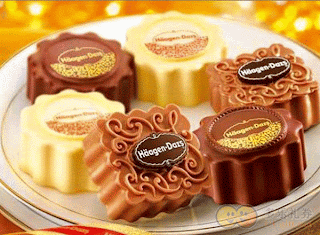The Moon on the Mid-autumn Day
The Mid-Autumn Festival is a traditional festivity for both the Han and minority nationalities. The custom of worshiping the moon can be traced back as far as the ancient Xia and Shang Dynasties (2000 B.C.-1066 B.C.). In the Zhou Dynasty (1066 B.C.-221 B.C.), people hold ceremonies to greet winter and worship the moon whenever the Mid-Autumn Festival sets in. It became prevalent in the Tang Dynasty (618-907) that people enjoyed and worshiped the full moon. In the Southern Song Dynasty (1127-1279), however, people sent round moon cakes to their relatives as gifts in expression of their best wishes of family reunion. When it turned dark, they gazed up at the full silver moon or went sightseeing by lakes, to celebrate the festival. Since the Ming (1368-1644) and Qing dynasties (1644-1911), the custom of Mid-Autumn Festival celebration has become unprecedentedly popular.
Different Celebrated Forms
Today, festivities centered about the Mid-Autumn Festival are more varied. After a family reunion dinner, many people like to go out to attend special performances in parks or on public squares. People in different parts of China have different ways to celebrate the Mid-Autumn Festival.
In Guangzhou in South China, a huge lantern show is a big attraction for local citizens. Thousands of differently shaped lanterns are lit, forming a fantastic contrast with the bright moonlight.
In Zhejiang, a province in East China, watching the flood tide of the Qian-tang River during the Mid-Autumn Festival is not only a must for local people, but also an attraction for those from other parts of the country. The ebb and flow of tides coincide with the waxing and waning of the moon as it exerts a strong gravitational pull. In mid autumn, the sun, earth and moon send out strong gravitational forces upon the seas. The south of the Qian-tang River is shaped like a bugle. So the flood tide which forms at the narrow mouth is particularly impressive. Spectators crowd on the river bank,watching the roaring tital waves.
Moon Cakes
Moon cakes are the special and unique food for the Mid-Autumn Day. For generations, moon cakes have been made with sweet fillings of nuts, mashed red beans, lotus-seed paste or Chinese dates, wrapped in a pastry. Sometimes a cooked egg yolk can be found in the middle of the rich tasting dessert. Today, there are hundreds varieties of moon cakes on sale a month before the arrival of Moon Festival. In America, people can buy moon cakes in Chinese supermarkets or China Town around the date of the festival.
Traditional moon cakes
Different kinds of moon cakes in modern times




No comments:
Post a Comment